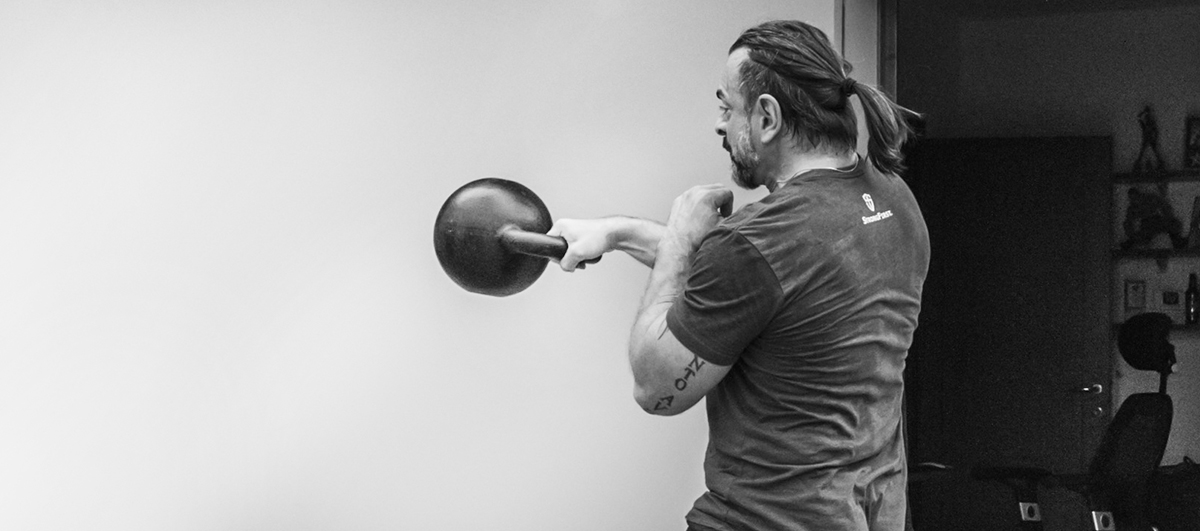This is not consistent with my personal experience. I've subjectively seen improvements from one 60 minute session, and I've seen improvements from working at even lower intensities than MAF, both unloaded walking with my dog and using a NordicTrack skier. By "seen improvements" I mean not getting as out of breath or tired playing basketball
I never enjoyed sustained aerobic exercise and so never did much of it. If was playing a lot of basketball, I got in good shape for basketball. But if I was coming off a layoff from playing, I'd be (to quote Charles Barkley) "sucking wind through every hole I could get it in," regardless of how much strength, "metcon," or high intensity interval training I had been doing off the court. I was convinced that there was really no way to do "conditioning" for full court basketball other than actually playing basketball.
But then I stumbled across an article on conditioning that asked a question that really resonated with my experience (paraphrasing from memory -- unfortunately I do not remember where I saw the article or the author's name): "How come you are doing tons of metcons and high intensity intervals and still gassing out when you compete?" The article then focused on the importance of a big aerobic base.
It was lightbulb moment, like when Pavel asked in PTTP, "If training to failure is so great, why has your bench been stuck on 185 since Arnold's last movie?"
Around this time I added two new (to me) modalities to my training. One was A+A style KB work, mainly using snatches, double cleans, and clubbell and mace swings. A+A gave me permission to take lots of rest between sets, minimizing the perceived level of effort of my training sessions, trying NOT to "keep my heartrate up," and just generally keeping training sessions relaxed -- letting the accumulated time and volume do the work instead of the intensity of my effort. I probably keep my A+A sessions more relaxed and take more rest between sets than most others who use A+A.
The other was adding some low intensity locomotive aerobic training, mainly using a NordicTrack cross country ski machine while watching sports on TV. I never used a heartrate monitor, but stuck to a comfortable level of effort I could sustain with exclusively nasal breathing and that I could sustain for an hour at a time (and still feel like I could continue basically indefinitely if I had to). I mostly did one hour sessions, often only one per week and never really more than 3 sessions in a week. Recently, I also adopted a new young dog who needs lots of walking, so I try to get in at least one walk of at least 30 minutes (and often 60 or more), plus a couple of 15 minute walks.
BTW, since I've started doing more walking, I've noticed a lot of positive effects on my posture, thoracic/shoulder mobility, and how my back feels. When I walk regularly, I can tolerate a lot of sitting and working at a computer without ill effects. When people talk about the negative effects of sitting, I'm convinced that they are less directly related to sitting and more to not walking enough.
Once I had been doing this for a while, all of a sudden I stopped getting tired on the basketball court. And if I had a layoff from playing, I still had excellent stamina when I started up again. The difference was very dramatic from what I had experience most of my training and playing life. And it not only comes at a low recovery cost, but I believe also enhances recovery from other activities.
One significant caveat is that this transition in training coincided with a period where age (I'm now 56) and accumulated orthopedic injuries and arthritis really began to catch up with me. The high school kids, college students, and twentysomethings I play with often compliment me on my conditioning (maybe they're just being nice), and I now joke that I can't run fast enough or jump high enough to get tired ;-). But even within that context, I am convinced that my training made a clear difference in my fitness for playing.
tl;dr: IMO, in the context of general health and fitness, even a relatively small amount of sustained low intensity aerobic exercise is worthwhile and it would be a mistake to think that it isn't worth it if you don't do long sessions and many hours a week.


